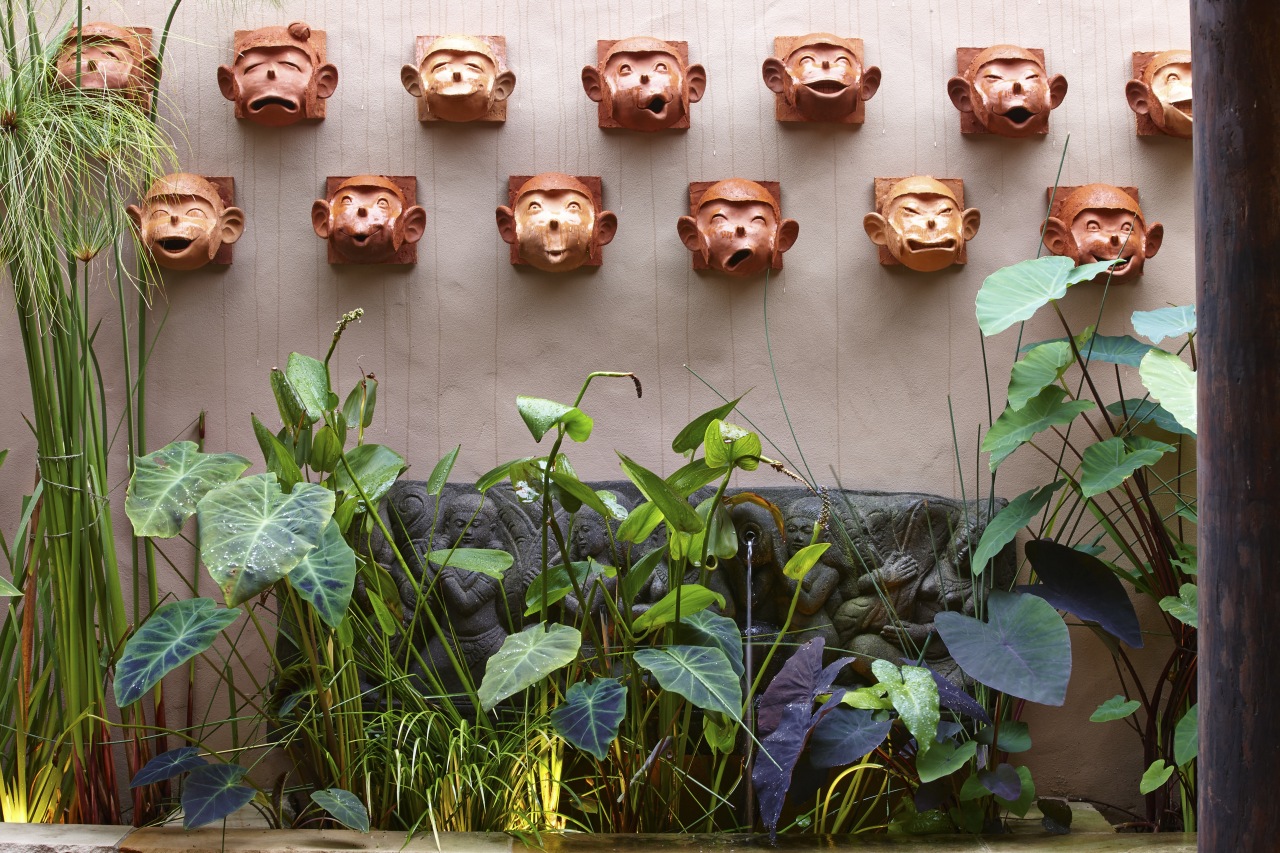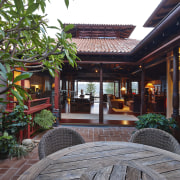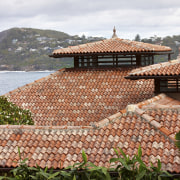Eastern promise Asian-style home by Walter Barda
Light-filled home by Walter Barda
Sometimes getting away from it all doesn't require a long journey. It can be as simple as coming back home and closing the front door.
The owners of this house asked architect Walter Barda for a design with a strong Eastern sensibility. The couple have a love of Asian culture and wanted the many artefacts they had collected on their travels to be incorporated into the design, says Barda.
"Their other desire was that the design have a private feel. In light of both requests, and to address the narrow coastal site, I decided to build a traditional Southeast Asian pavilion-style home over several levels. This involved creating six floors stepping down the cliff, a complex task which required a sophisticated steel structure. However, we were able to completely conceal this with panelling and authentic Asian pieces provided by the owners."
In the great room, the steel support posts and spans are set within large Asian-style turned beams, created by a local artisan. Only the post and beam structure and the batten ceiling typical of traditional Southeast Asian architecture is left on show.
"It is this visible structure, together with the museum-quality columns, doorways, carved lintels and the owners' furniture, that really gives the home its oriental flavour and character."

Entry to the home is from above, and the two pop-up lantern roofs one over the great room, the other over the lift shaft together with the terracotta roof tiles, are an early clue to the home's cultural leanings. Barda says the roof tiles were imported from France where they are made for the repair of temple buildings in Asia.
Guests arrive through a pedestrian entrance on the cliff side and then emerge into the open-air entry courtyard before moving on into the mixed-use great room. This is the main public room in the house, with a master suite and guest bedrooms on the floors below.
Layered spaces are an important aspect of Asian aesthetics, and this design, which flows from indoors to outdoors and then back inside again, is in keeping with this concept. Beyond the great room, a terrace provides an open view of the seaside setting. In poor weather, large pocket sliders can enclose the space and provide protection from the wind and rain.
While light pours into the great room from the openings to the courtyard and deck, it also enters through the internal wood shutters, and the pop-up roof. The red lacquer finish on key joinery elements is a typical oriental accent, and similar tones are seen in the clay roof tiles and brickwork in the courtyard.
"Apart from these red highlights, most of the home is in stained natural wood," says Barda. "This is not only an appropriate Asian treatment, it is also practical for a coastal setting, where the glare from the sun and sea can be overwhelming."
Barda designed several important elements in the home such as the four-poster bed in the master suite that features original bedposts from Thailand. A custom dining table was also commissioned to match the antique dining table.
"I also designed a motif reminiscent of atraditional lattice screen, which recurs throughout the house. And we created the decorative feature over the fireplace in the great room that conceals the television."
The house is also designed to work well for entertaining. For example, the kitchen is on show to the dining area, but has been given a furniture-like appeal with the inclusion of a large stone island. A raised back on this element provides a bar front or landing space, but also screens clutter from view.
A lift links the six stepped buildings. The last of these functions more as a beach cottage for guests, only partly connected to the main structure of the house.
Story by: Trendsideas
Home kitchen bathroom commercial design
Diving into nature
Classic looks, contemporary efficiency
Personality plus















